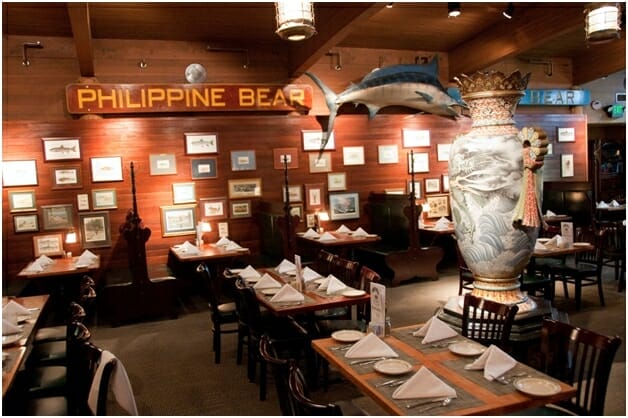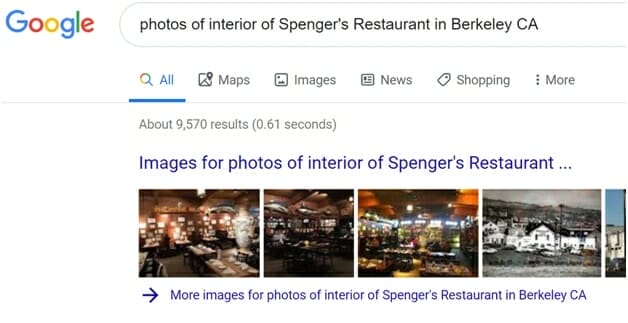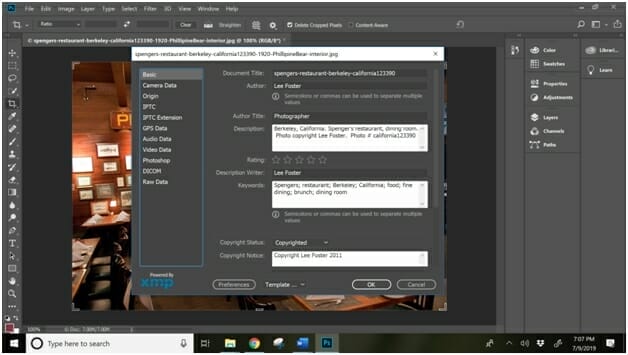By Lee Foster
A writer in the modern era will likely have some relationship with photography, and may decide to get involved in photo creation and marketing as another aspect of creation and monetizing.
We started this discussion in my post, Can You Make (And Even Sell) Your Own Photos?
Followers of Joel’s modern-publishing ecosystem are generally authors and writers developing and selling their books and articles. But what about selling photos? How does that happen if you decide to create and sell your photos?
The short answer is: Your photos get found and licensed because of words correctly embedded in them.
However, what is the process? Moreover, where does the photo need to be on the Internet to get “discovered” by a willing buyer?
Several of you wrote me, “Tell us how this all works.”
Here is a practical example that illustrates the reality.
How My Photo Was Discovered
An editor found my photo in a search for the interior look of a famous but deceased restaurant.
The editor was working for a magazine called California, the alumni magazine for the University of California, Berkeley. She decided to run an article about a famous restaurant in Berkeley, called Spenger’s, that had served seafood from 1890 until 2018. The restaurant was one of the largest and most successful in the West. It also had a special nautical interior decor. The restaurant closed abruptly in 2018.
A writer did the article, which is well-written. The editor sent a photographer, on a cloudy day, to photograph the exterior. The photos of the exterior weren’t lovely in the cloudy weather, but were adequate, and timing was tight. The photographer learned that the interior of the restaurant had already been gutted, so no interior photos were possible.
How would the editor find and buy my photo of the interior nautical décor of the landmark Spenger’s restaurant? I was not familiar with the editor or the publication, all new to me, despite the fact that I happen to live in Berkeley, CA.
Here is one of the images she licensed from me, showing the nautical interior of Spenger’s:

How did the editor find and license my image?
The editor did a Search on Google for photos. You can replicate her Search: “Photos of interior of Spenger’s Restaurant in Berkeley CA”
This is what comes up. Go ahead do this Google Search yourself:

Note that my image is the one on the left. What caused it to come up?
The photo appeared in the Google Search because of keywords and description words in my photo that matched the editor’s request. There was clickable contact info that brought her to my WordPress general website at www.fostertravel.com. She contacted me, and I sent her to my specialized photo-selling website at https://stockphotos.fostertravel.com.
Adobe PhotoShop
I put my data in my photo with Adobe PhotoShop. I recommend using this program. (Licensable at $29.99/month, lifetime painful monthly cost to Adobe, with the companion program, Lightroom, thrown in.)
When you pull up a photo with PhotoShop, what do you see?
On the left column, under File, you would scroll down to File Info and insert descriptive information and some keywords. For this one I had as a Description: “Berkeley, California: Spenger’s restaurant, dining room.”
And I had the keywords: “Spengers; restaurant; Berkeley; California; food; fine dining; brunch; dining room.”
Other data indicated that this was my photo, by Lee Foster, and was copyrighted, so the editor knew she would have to license it to use it.
Here is a screenshot of what this data looks like in PhotoShop in File Info:

WordPress
My photo was in a discoverable internet structure.
The found photo is now also on my WordPress website at www.fostertravel.com, but was formerly only on my photo-selling site.
When I upload a photo to WordPress, the metadata, such as the keywords, doesn’t seem to take. So I dutifully put in a phrase in WordPress when the photo is in my Photo Library for 3 fields, below the photo in the WordPress structure. The fields are the Alt Text, Title, and Description. I put the same phrase in all 3 fields.
PhotoShelter
My photo selling site is on a different and more sophisticated structure. See it, as mentioned, at https://stockphotos.fostertravel.com. The structure is provided by an entity called PhotoShelter at www.photoshelter.com. You could set up such a site with them for your photos for perhaps $300/year, the rental cost of their space and their software.
About 80,000 professional photographers have about 400mil photos on PhotoShelter, which is based in New York. Every editor with any credibility is familiar with this structure, a major photos-for-sale ecosystem. I have about 7,000 photos on my site.
On PhotoShelter You (The Photographer) Control Everything
You choose the price, the download permission for hi-resolution photos, and even products (sale of your photos as prints, on cards, or on a coffee mug). The entire system is totally automated.
An editor unknown to me can pay a set price, which I set up, for a certain use, and download a photo immediately hi-res after payment.
Editors with whom I have long term relationships, such as the photo editor of the CA AAA magazine Via, one of the top circulation magazines in the US today, become my Trusted Clients. I let them download anything at anytime and pay me a pre-negotiated fee when they use something. I see the downloads. I invoice them when they indicate a use has occurred. They won’t rip me off.
I also offer a special inexpensive Personal Use license of $20 with which I allow an individual to download a photo and use it for their blog, book, or an art print they can self-print for their wall. Individuals can move a photo to the shopping cart, click on Download, see the Personal Use license, pay $20 with their credit card, and download the hi-res of their desired image.
Go ahead and Search “Spenger’s” on my site and you will see several of my Spenger’s interior images.
It’s important in photo sales for the photographer to understand the appropriate market price for a photo license. It’s not helpful to undersell other professionals and destroy the market.
One aspect of any photo’s value is scarcity. The Spenger’s interior is an example. It is gone. Only historic photos from the past would do. Who has those photos?
The other scarcity element is the time of the editor. If the editor is on a tight deadline, the price paid can be higher. The issue is where can a willing buyer and a willing seller come together in commerce.
The Editor’s Final Layout Used Two of My Photos
The layout for California magazine had an engaging article with a clever headline. See it live as Anchor’s Aweigh: Spenger’s Fresh Fish Grotto Sets Sail, for Good. The restaurant flourished in a big way for an incredibly long period, 1890 until 2018. I had many enjoyable meals with friends and family at Spenger’s 1980-2018.
Note the dull sky photos, adequate but not appealing. I had better alternatives, with blue sky, done a week later. But the editor had already blown her budget, sending her photographer, and timing was tight, and the dull exterior sky was good enough. Such is the rough and tumble of photo selling.
The editor chose a second photo from my interiors offering, some folks at a buffet, partly because Spenger’s was famous for its seafood buffets.
Whether selling photos as well as writing is a plausible path for you is a complex question, which we could discuss.
Creating and selling both writing and photography might be seen as going through life with two crosses to bear. One the other hand, the dual path also offers two opportunities for creative and financial salvation.
Photo: BigStockPhoto


